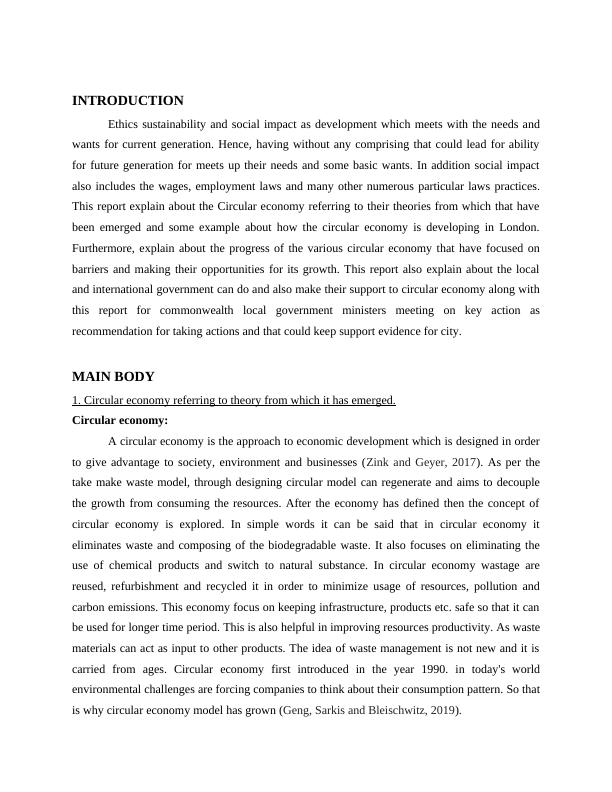Ethics Sustainability and Social Impact
This is Assessment Brief 2 for the course LSBM201 on Ethics, Sustainability and Social Impact. The assignment is a portfolio worth 60% of the module grade with a word limit of 3,000 words. The submission deadline is Friday 9 April 2021, 3pm.
11 Pages3608 Words56 Views
Added on 2022-12-16
About This Document
This report explores the concept of the circular economy, its theories, and examples of its development in London. It also discusses the role of companies and local governments in supporting the growth of the circular economy.
Ethics Sustainability and Social Impact
This is Assessment Brief 2 for the course LSBM201 on Ethics, Sustainability and Social Impact. The assignment is a portfolio worth 60% of the module grade with a word limit of 3,000 words. The submission deadline is Friday 9 April 2021, 3pm.
Added on 2022-12-16
ShareRelated Documents
End of preview
Want to access all the pages? Upload your documents or become a member.
Circular Economy and its Relation to Theories
|13
|4040
|65
Ethics, Sustainability and Social Impact
|14
|4007
|382
Ethics, Sustainability and Social Impact
|15
|4067
|2
Circular Economy: The Path to Sustainable Development and Social Impact
|11
|3961
|1
Circular Economy: Theories and Development in Chittagong, Bangladesh
|11
|3633
|298
Ethics, Sustainability and Social Impact
|12
|3682
|42




